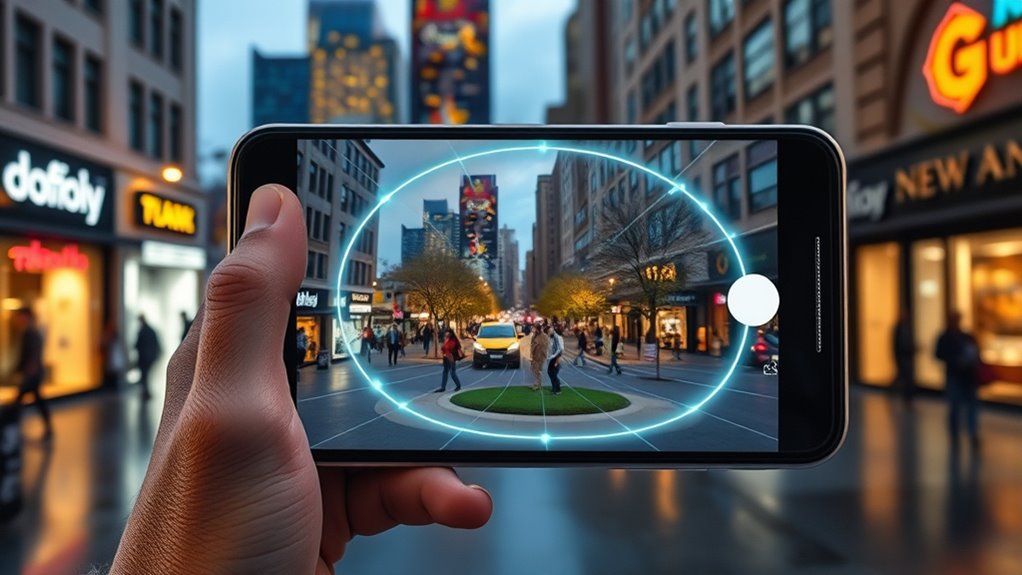When adding geofencing to your app, you must guarantee compliance with new location-data laws. This means obtaining clear, explicit user consent before collecting or using any location info, and providing easy options for users to manage their permissions at any time. Transparency about how you use their data builds trust and helps avoid legal issues. If you keep these guidelines in mind, you’ll better understand how to navigate the complex legal landscape—continue to learn more.
Key Takeaways
- New location-data laws require explicit user consent before enabling geofencing features in your app.
- Transparency about how geofencing data is collected, stored, and used is legally mandatory.
- Users must be able to easily revoke location permissions at any time through accessible settings.
- Proper permission requests should use clear, understandable language avoiding hidden clauses.
- Compliance with legal regulations helps prevent penalties and builds user trust in your app’s privacy practices.

Have you ever wondered how apps send you relevant notifications based on your location? It’s often thanks to geofencing technology, which creates virtual boundaries around real-world areas. When you enter or leave these zones, your device triggers specific actions, like sending targeted offers or alerts. While this can improve your user experience, it also raises important questions about privacy concerns. Many users worry about how their location data is collected, stored, and used. To address these issues, laws now emphasize user consent, requiring app developers to be transparent and obtain explicit permission before tracking your movements.
Geofencing uses virtual boundaries to send targeted notifications, raising important privacy and consent considerations for users and developers alike.
When you enable location-based features, you’re essentially giving the app permission to access your whereabouts. That’s why user consent is essential—it ensures you’re aware of what data is being collected and how it’s being used. As a developer, you’ve got to make this process clear and straightforward. Avoid confusing language or hidden clauses; instead, provide a simple explanation of why you’re requesting access and what benefits it offers. This transparency not only builds trust but also helps you comply with legal requirements aimed at protecting user privacy.
However, obtaining user consent isn’t a one-time event. Laws now mandate that you ask for permission in a way that’s easy to understand and that you respect users’ choices. If someone declines, you must honor that decision and refrain from collecting their location data. Furthermore, you should give users control over their data, allowing them to revoke consent at any time. This means implementing clear options within your app settings for managing location permissions. Failing to do so can result in legal penalties and damage your reputation. Additionally, understanding the importance of contrast ratio can help in designing user interfaces that are more accessible and clear, ensuring users are fully informed about what data they are sharing.
Frequently Asked Questions
How Can Developers Ensure Compliance With New Location-Data Laws?
To guarantee compliance with new location-data laws, you need to prioritize user privacy and implement data encryption. Clearly inform users about how their data is collected and used, and obtain explicit consent before accessing location info. Regularly review and update your privacy policies, and use encryption to protect data both at rest and in transit. Staying transparent and secure helps build trust and keeps your app compliant with evolving regulations.
What Are the Penalties for Violating Geofencing Regulations?
If you violate geofencing regulations, you risk severe legal consequences and privacy violations. Authorities may impose hefty fines, lawsuits, or even criminal charges, depending on the breach’s severity. These penalties aim to protect user privacy and enforce compliance with data laws. To avoid these repercussions, guarantee your app respects all regulations, maintains transparency, and handles location data responsibly, safeguarding user trust and legal standing.
Do These Laws Apply Internationally or Only in Specific Regions?
While laws governing location data often seem regional, their international scope is expanding. You might assume regulations apply only locally, but regional differences can complicate compliance, especially if your app operates across borders. Countries like the EU enforce strict privacy rules, whereas others may have more lenient policies. So, you need to stay informed about regional differences to avoid legal pitfalls and make certain your app respects diverse data protection laws worldwide.
How Do User Consent Requirements Differ Across Jurisdictions?
You need to understand that user consent requirements vary across jurisdictions. In some regions, laws demand clear privacy policies and transparent communication about data use, including geofencing. You should guarantee your app explicitly informs users and obtains their consent before collecting location data. Staying compliant means adapting your privacy policies to meet local laws, maintaining user transparency, and respecting their control over personal information, no matter where your users are located.
Are There Any Technical Best Practices for Secure Location Data Handling?
To handle location data securely, you should follow best practices like implementing strong privacy protocols and adhering to encryption standards. Always encrypt data both in transit and at rest, and restrict access to authorized personnel. Regularly review your security measures to identify vulnerabilities. By maintaining rigorous privacy protocols and using up-to-date encryption standards, you protect user information and comply with regulations, reducing the risk of data breaches and ensuring trust.
Conclusion
As you implement geofencing, remember that over 80% of consumers are concerned about how their location data is used. Staying compliant with evolving laws not only protects your app from fines but also builds trust with your users. By being transparent and cautious, you can leverage geofencing’s benefits without risking legal trouble. Don’t let new regulations catch you off guard—prioritize privacy, and your app will thrive in today’s data-conscious world.









